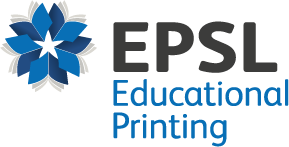At EPSL, we know that there are many ways you can create a more organised, focused classroom. Our high-quality exercise books and supplementary reading materials have helped numerous teachers get the most out of their students. But, overcoming procrastination is about more than just having the right tools. You need a multi-pronged approach that consistently works to boost focus both for group activities and individual learning, and we’ve put together some tips to help you get started.
Communicate expectations clearly
If you want students to focus on a task, you need to tell them that. Whether it be at the start of the day or before independent work, outline your expectations of them clearly and with a positive attitude. Some targets to pinpoint could include:
- Minimal or no talking among students for the duration of the task
- A task completed in a certain amount of time
- Eyes front when you’re speaking
Be empathetic and realistic
Being reasonable and empathetic is vital when encouraging your students to focus. If you ask them to do a 10-minute task in 5 minutes, they’ll give up before they’ve even started. You need to be realistic while still pushing your pupils to do their best.
So how short a time is too short? If you’re uncertain, get your students involved and ask them how long they think the task will take. Creating this dialogue of expectations and capabilities is a fantastic way to engage the class and will go a long way to improving their focus.
Teach focus time sessions
Timed sessions can be used both inside and outside of the classroom to improve your students’ abilities to engage in high-focus work. The concept is simple: you work for a set amount of time, then break for a set amount of time, and then work again. Rinse and repeat until the task is done.
For younger students who struggle with their attention span, start small with 10-minute work times (or even 5 minutes to introduce the system) and 2-3 minute breaks, working your way up as their focus improves.
Don’t forget to reward good work
Students sometimes need extra motivation to get their work done. As a teacher, it’s your job to give them the incentive to focus by offering recognition and rewards. If you’re yet to try the old-school star chart, now’s as good a time as any to give it a go! But don’t forget that feedback can go a long way, with a simple “well done” doing wonders for positive reinforcement.
Spread out deadlines
For students tackling projects, you might see that when the deadline arrives a few of them haven’t got all of the work done. Make this less likely with staggered timelines, encouraging students to stay on track for the hand-in date. For example, if you’ve set an essay, ask for introductions to be done for the next day, the main body to be done two days later, and the final conclusion by the end of the week.
There are tons of ways you can help students start beating procrastination, and these are just some of our favourites! We also recommend combining the tips with well-designed school equipment, like our range of personalised exercise books and supplementary reading materials offered at EPSL. Take a look at the entire collection on our website today.
If you have any questions about our educational products, feel free to give us a ring on 01254 686 500. When it comes to your classroom, we’re always happy to help!









